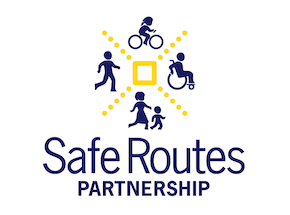 If the news in your hometown is similar to what I hear in Washington, DC, you are probably hearing a lot about the sequester. Back in 2011, Congress and the President agreed to reduce the federal deficit, and created the sequester as a fail-safe to force spending cuts if they couldn’t reach a deal.
If the news in your hometown is similar to what I hear in Washington, DC, you are probably hearing a lot about the sequester. Back in 2011, Congress and the President agreed to reduce the federal deficit, and created the sequester as a fail-safe to force spending cuts if they couldn’t reach a deal.
Resource Library
This document provides a full copy of the Safe, Accountable, Flexible, Efficient Transportation Equity Act. (SAFE-TEA)
This document summarizes goals and performance measures for MAP-21.
 I recently had the opportunity to speak to Mayor Carolyn Thompson of Elkton, Tennessee. Elkton has fewer than 20,000 residents and is about twenty-five miles north of Huntsville, Alabama. Elkton has one elementary school with 327 students in pre-Kindergarten through eighth grade. They also do not have any sidewalks in their town.
I recently had the opportunity to speak to Mayor Carolyn Thompson of Elkton, Tennessee. Elkton has fewer than 20,000 residents and is about twenty-five miles north of Huntsville, Alabama. Elkton has one elementary school with 327 students in pre-Kindergarten through eighth grade. They also do not have any sidewalks in their town.
This book provides government officials, transportation decisionmakers, planning board members, and transportation service providers with an overview of transportation planning. It contains a basic understanding of key concepts in statewide and metropolitan transportation planning, along with references for additional information.
 The Mississippi Delta is a region of the state that is comprised of approximately 18 counties, of which 30% of the residents live below the poverty level.
The Mississippi Delta is a region of the state that is comprised of approximately 18 counties, of which 30% of the residents live below the poverty level.
A comprehensive school physical activity program (CSPAP) can ensure that students achieve the recommended amounts of daily physical activity by providingopportunities for physical activity before, during and after the school day. This resource describes components of a CSPAP.
 With spring new leadership emerges within the Safe Routes Partnership (Safe Routes Partnership) Florida Network. However, to some this “newness” may be a bit familiar.
With spring new leadership emerges within the Safe Routes Partnership (Safe Routes Partnership) Florida Network. However, to some this “newness” may be a bit familiar.
Schools play a central role in providing opportunities for students to engage in physical activity. Physical education (P.E) is the one time during the day when all students can be active. School boards can consider policy and curriculum strategies to support increased physical activity in P.E.
 Let’s Go NC! was developed for the North Carolina Department of Transportation’s (NCDOT) Division of Bicycle and Pedestrian Transportation and the state Safe Routes to School program by NC State University’s Institute for Transportation Research and Education (<
Let’s Go NC! was developed for the North Carolina Department of Transportation’s (NCDOT) Division of Bicycle and Pedestrian Transportation and the state Safe Routes to School program by NC State University’s Institute for Transportation Research and Education (<
This resource outlines the roles and responsibilities of school board members regarding school healthand student wellness.
 “Wear lights, especially at night,” “no texting while walking,” “make them see you.” It seems to be that time of year in the Greater Washington, D.C. metro region where every jurisdiction is finishing up or rebranding their Pedestrian Safety Campaigns.
“Wear lights, especially at night,” “no texting while walking,” “make them see you.” It seems to be that time of year in the Greater Washington, D.C. metro region where every jurisdiction is finishing up or rebranding their Pedestrian Safety Campaigns.
This report serves as an educational piece for Congressional members on the progress of Safe Routes to School. The report includes an executive summary, successes of the federal SRTS program, lessons learned, challenges, funding information, and recommendations for the future of SRTS.
 Major polls show that Americans want to live in places where it’s safe to walk and bicycle. The demand for walkable, livable communities has prompted many municipalities to make more investments in multi-modal transportation and adopt policies such as Complete Streets that institutionalize planning, design and construction for all types of road users.
Major polls show that Americans want to live in places where it’s safe to walk and bicycle. The demand for walkable, livable communities has prompted many municipalities to make more investments in multi-modal transportation and adopt policies such as Complete Streets that institutionalize planning, design and construction for all types of road users.
This resource provides school board members with information on local wellness and physical activity resources, sample policies, case studies and fact sheets.
 This week, both the House and Senate are considering their transportation appropriations (or funding) bills. Because most transportation funding is locked in through MAP-21, we don’t have to fight for funding every year like most programs. (See more on timing updates below)
This week, both the House and Senate are considering their transportation appropriations (or funding) bills. Because most transportation funding is locked in through MAP-21, we don’t have to fight for funding every year like most programs. (See more on timing updates below)
This guide explains how the public and interested stakeholders can get involved in the San Francisco Bay Area’s transportation project development process. Specifically, we focus on the Transportation Improvement Program or TIP, which is compiled and approved by the Metropolitan Transportation Commission.
 September is National Childhood Obesity Awareness month, which in recent decades has been the time to reflect on sobering statistics, like the fact that between 1971 and 2008, the rate of childhood obesity among children age 6 to 11 rose from 4.2 percent to 19.6 percent.
September is National Childhood Obesity Awareness month, which in recent decades has been the time to reflect on sobering statistics, like the fact that between 1971 and 2008, the rate of childhood obesity among children age 6 to 11 rose from 4.2 percent to 19.6 percent.
This study explores how school-level dynamics that underlie the planning and implementation of SRTS programs relate to the percentage of students who walk and bicycle between home and school.
Safe Routes to School Programs and activities have unique opportunities and needs in rural areas. At the Safe Routes Partnership Annual meeting in August, several advocates from rural areas shared their creative ideas to creating thriving programs in rural areas.

